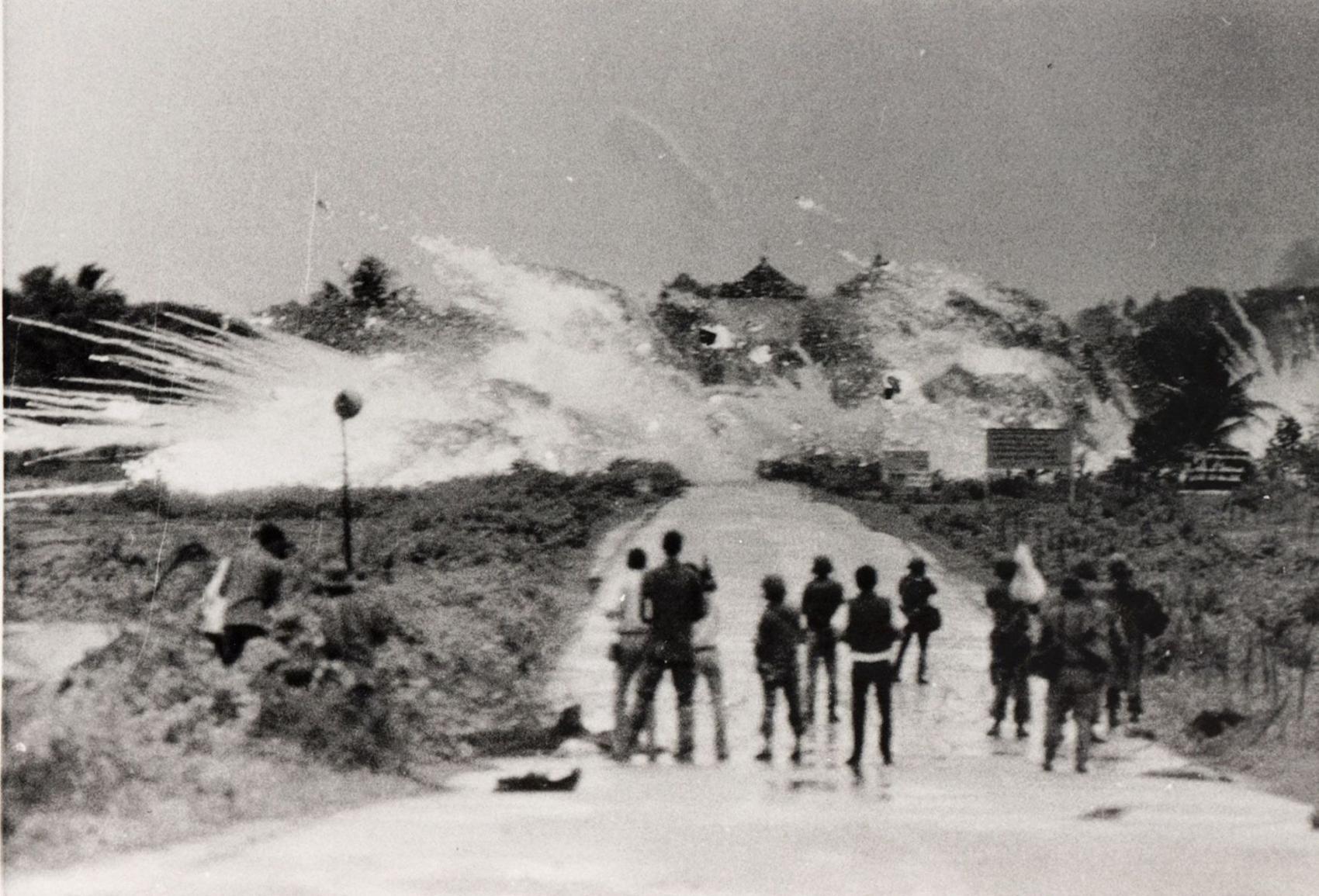
"A Napalm Bomb Explodes as Soldiers Watch," AP Images, June 8, 1972
"A Suspected Viet Cong Is Kicked by a South Vietnamese Soldier ," AP Images, October 1965
After the termination of French rule in 1954, Vietnam turned to communism. In an attempt to stop the spread of communism throughout Southeast Asia, President Eisenhower pledged to support the South Vietnam dictator, Ngo Dinh Diem, in 1956. In 1965 President Johnson deployed troops and by 1966 the US had recruited 300,000 soldiers to serve in Vietnam.
"SYND 17-4-72 VICTIMS OF NAPALM ATTACKS TREATED AT THE BARSKY UNIT, SAIGON," AP Television, 1972
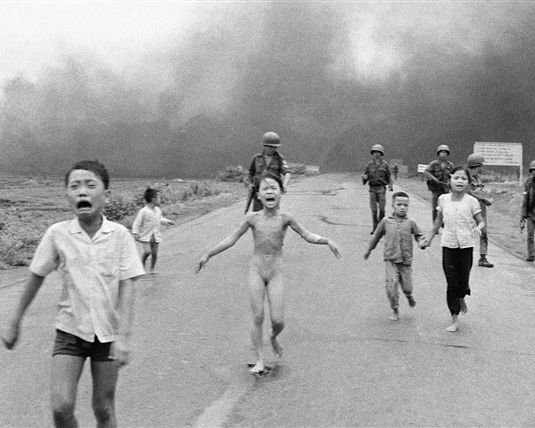
“The Napalm Girl,” AP Images, 1972
Corporations like Dow Chemical fueled the war. Recruited by the US government, Dow began production of napalm in 1965 and soon became the US government’s sole supplier. Napalm, dropped at a rate of 5,000 tons a month, burned throughout the Vietnamese countryside.
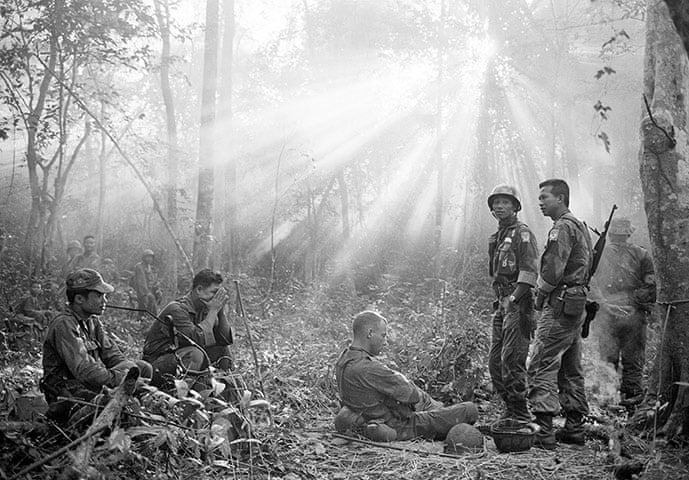
"The sun breaks through the dense jungle foliage around the embattled town of Binh Gia, 40 miles east of Saigon, in early January 1965, as South Vietnamese troops, apparently joined by U.S. advisers, rest after a cold, damp and tense night of waiting in an ambush position for a Viet Cong attack that didn't come," AP Images, January 9, 1965

"A Napalm Bomb Explodes as Soldiers Watch," AP Images, June 8, 1972
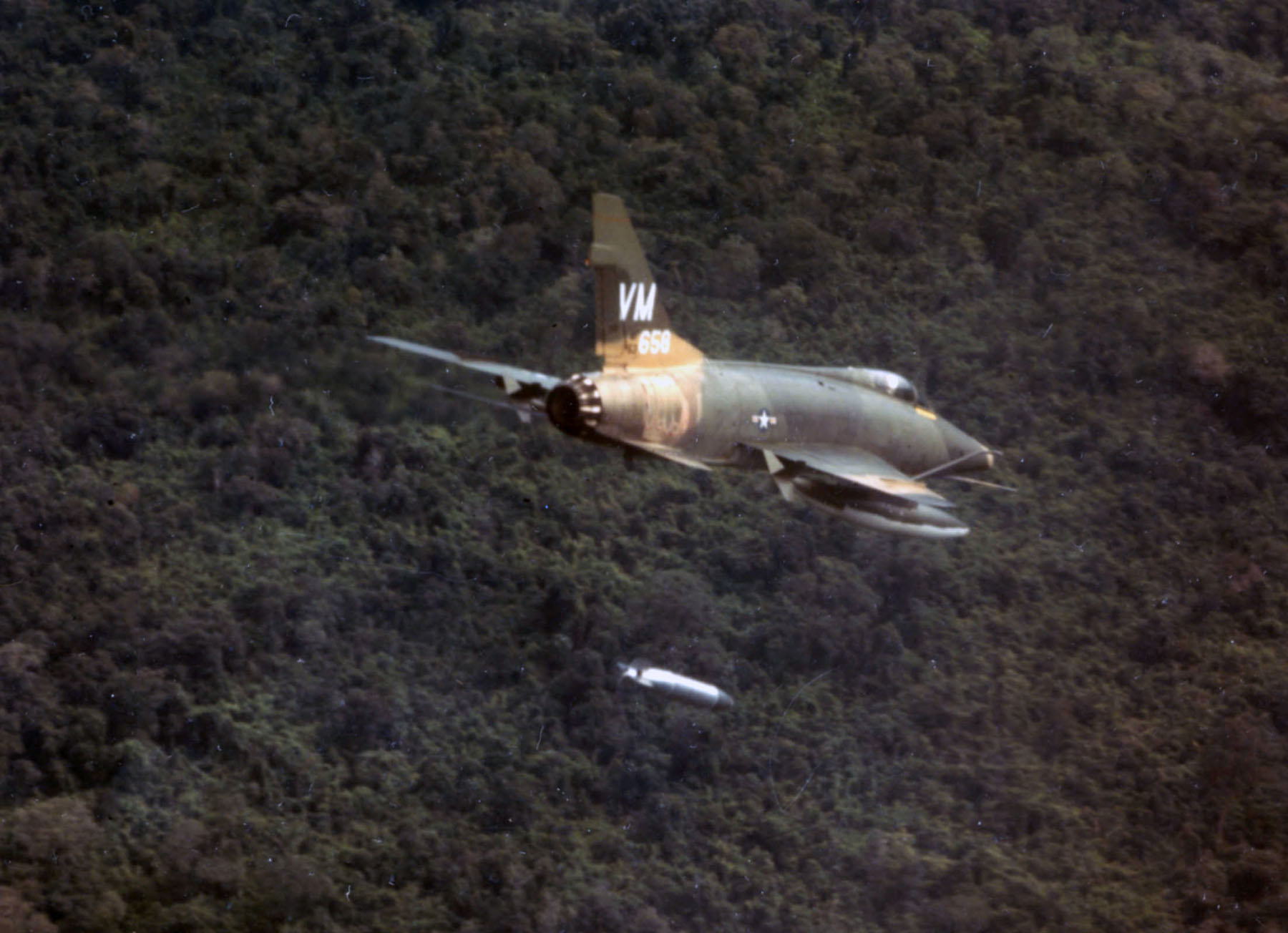
"F-100D of the 352nd Tactical Fighter Squadron dropping a napalm bomb near Bien Hoa, South Vietnam," U.S. Air Force
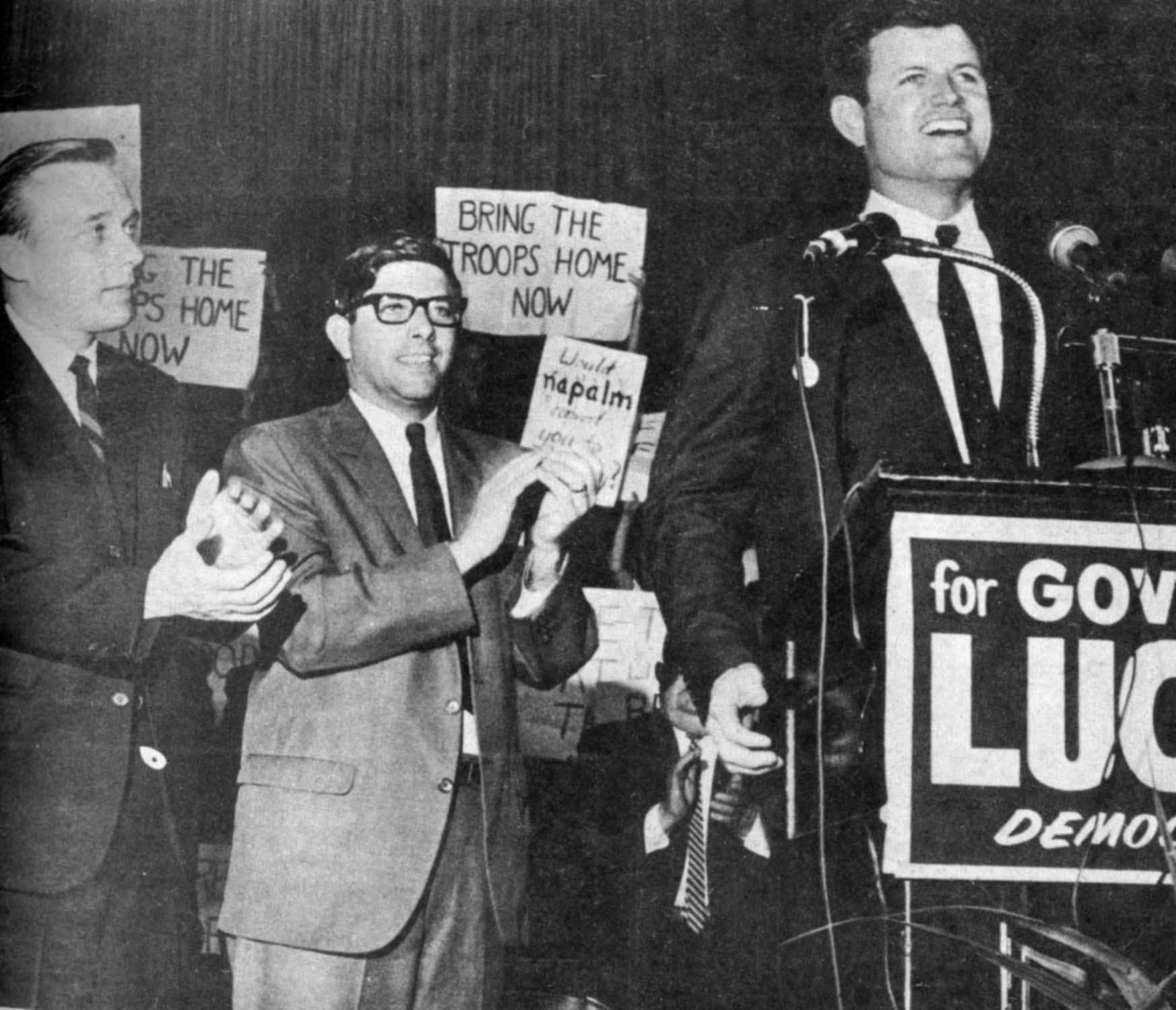
"Ted Kennedy," Wisconsin Historical Society, October 26, 1966
The 1960s, a formative decade for Madison, saw infrastructure development like the John Nolen causeway and civil rights milestones like the fair housing code.
As the Vietnam War raged on, UW college students created the Committee to End the War in Viet Nam (CEWVN). When Senator Ted Kennedy came onto campus on October 27, 1966, CEWVN members heckled him off stage. In response, the UW passed policies to punish students who disrupted university events. Within a year, Dow came to the UW to recruit future employees. Outraged that the UW was inserting itself into the industrial war complex, students occupied administrative offices and the first mass arrests on campus occurred.